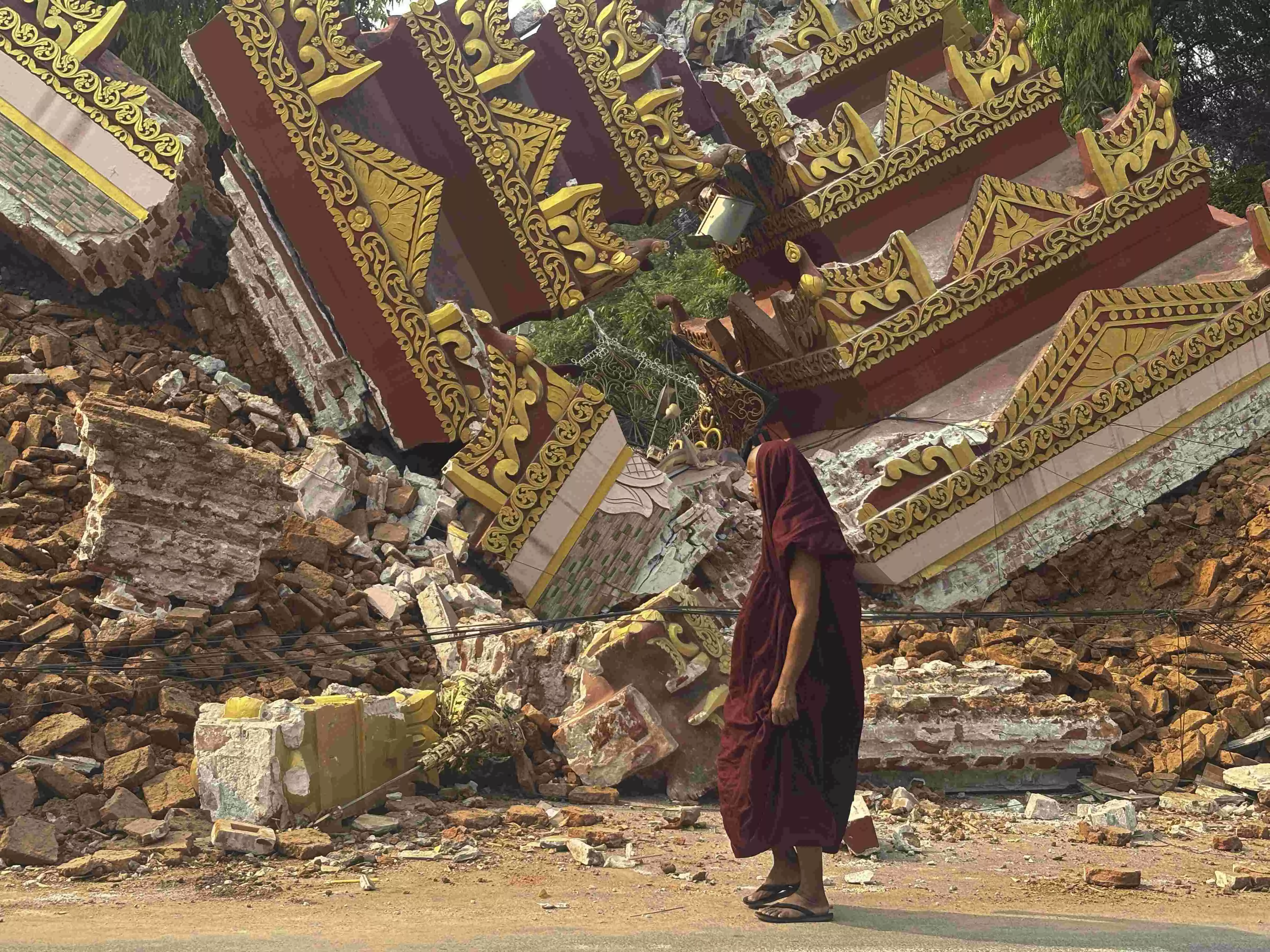Troubling Double Whammy

As a deeply devastating and shallow 7.7-magnitude earthquake shook central Myanmar—leaving more than 1,600 people dead and thousands injured—entire buildings crumbled and roads cracked open. Desperate rescue efforts are underway to save those trapped under the rubble. But amid this massive humanitarian crisis, Myanmar’s military junta continues to wage war against its own people. It is bombing areas affected by the quake instead of aiding survivors. The brutality of this response has understandably drawn international outrage. The United Nations has called the move “completely outrageous and unacceptable.” The people of Myanmar are currently caught in a double whammy, with the magnitude of their crisis still mounting.
India, on the contrary, has stepped in as a first responder with its Operation Brahma, which is a large-scale relief mission aimed at rescuing and providing aid to those in need. Within hours of the disaster, India successfully mobilised its National Disaster Response Force (NDRF). It has also dispatched trained rescue personnel, concrete cutters, drill machines, and other life-saving equipment. Medical teams have been deployed, and naval ships carrying tonnes of humanitarian aid have also reached Myanmar’s shores. India’s gesture of solidarity and support to its neighbours in times of crisis has now become an established protocol. This only goes on to show the depth and genuineness of India’s relations with its neighbours and the broader world. No wonder then that India is counted among the most trusted allies at a global level.
However, the challenge for the people of Myanmar goes far beyond securing immediate relief. Myanmar’s political instability makes it nearly impossible for aid to reach those who need it the most. The military junta, which seized power in 2021, has a history of using humanitarian aid as a tool to maintain control. Reports suggest that relief efforts could be manipulated—areas controlled by the military may receive supplies while those held by resistance groups could be cut off entirely. This pattern of weaponising aid has been seen before, and it raises serious concerns about the effectiveness of international assistance.
It must be noted that the earthquake has struck a country that is already suffering from years of civil war, and where armed resistance groups and ethnic militias control vast regions. In Sagaing, the epicentre of the quake, pro-democracy fighters have been battling the junta’s forces for years. Now, as thousands fight for survival, the military’s response has been brutally shocking. Meanwhile, global powers have also stepped in. China and Russia, despite being Myanmar’s primary arms suppliers, have sent rescue teams and aid. But this dual role raises a troubling contradiction—on one hand, they are fuelling the junta’s military aggression, and on the other, they are offering help. This is not lost on Myanmar’s people, who view such gestures with scepticism. India’s role in this crisis is crucial. As Myanmar’s immediate neighbour, it has a responsibility not just to provide relief but also to ensure that aid reaches those in need, irrespective of political affiliations. By naming the mission ‘Operation Brahma,’ India symbolically aligns itself with the idea of creation and renewal—helping Myanmar rebuild from this disaster. But India must also push for accountability, ensuring that humanitarian efforts are not hijacked by the junta. The coming days will be critical. With thousands still trapped, rescue teams are racing against time. The international community must keep a close watch on how aid is distributed and demand transparency from the military regime. This disaster is indeed a test of Myanmar’s resilience. The people of Myanmar need lasting support, free from political manipulation.



